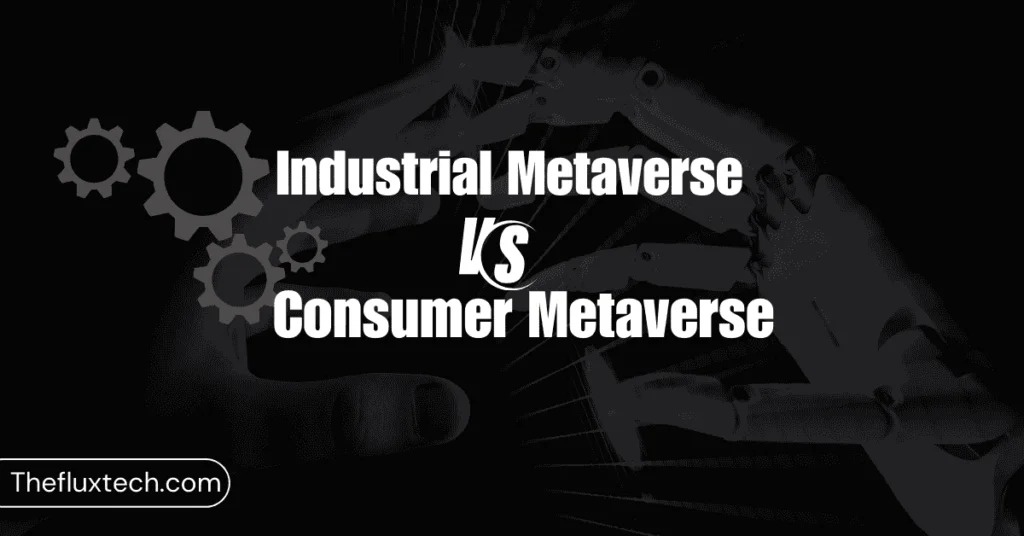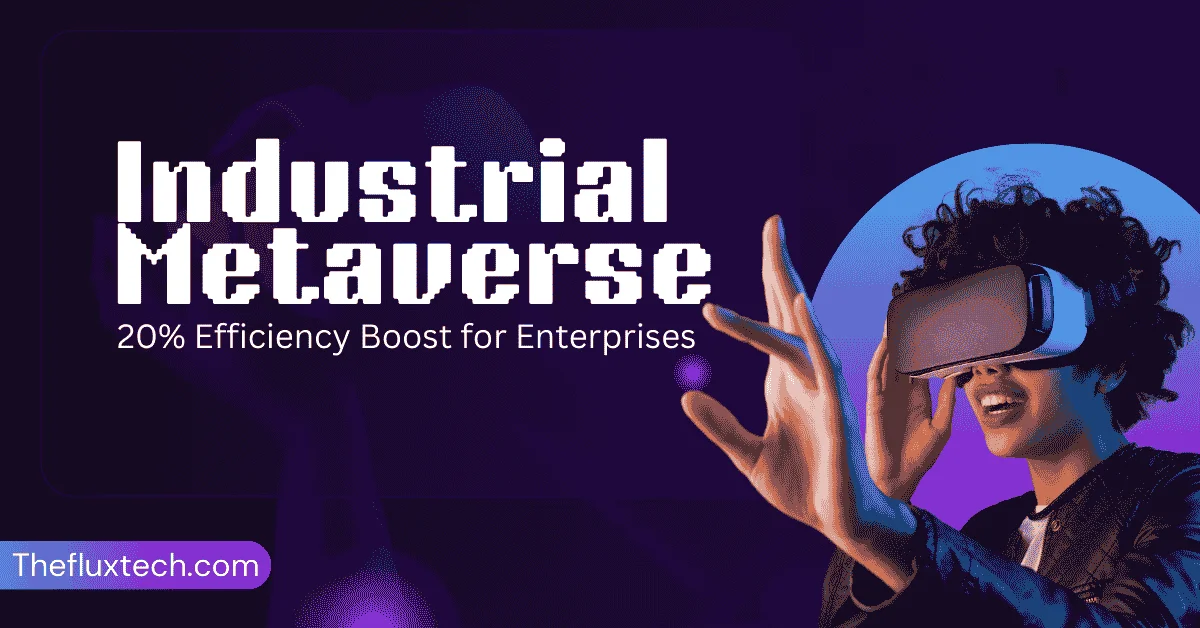The industrial metaverse is rapidly emerging as a transformative concept for businesses worldwide. Unlike its consumer-focused counterpart, the industrial metaverse is tailored to enhance enterprise operations by combining the physical and digital worlds.
This innovation is reshaping how industries operate, collaborate, and innovate, opening new doors for efficiency, scalability, and sustainability.
What is the Industrial Metaverse?
The industrial metaverse refers to a virtual environment that integrates real-world industrial processes with digital technologies. It goes beyond mere simulations by enabling real-time data integration, advanced modeling, and collaboration in a virtual space.
This concept enables enterprises to create digital twins of their factories, machines, and supply chains, allowing them to predict outcomes, troubleshoot issues, and optimize performance.
Key Components of the Industrial Metaverse
Several components define the industrial metaverse, including digital twins, virtual reality (VR), augmented reality (AR), and artificial intelligence (AI). Digital twins are precise digital replicas of physical assets that allow businesses to simulate, monitor, and manage operations.
VR and AR enhance user experiences by enabling immersive interactions with digital models, while AI ensures data-driven decision-making through insights from vast datasets.
How the Industrial Metaverse Differs from the Consumer Metaverse

The consumer metaverse often focuses on entertainment, social interactions, and gaming, while the industrial metaverse emphasizes practical applications. It is designed for industries like manufacturing, healthcare, logistics, and energy, aiming to improve productivity, reduce costs, and minimize risks.
The industrial metaverse relies heavily on precise data integration and high-level analytics, whereas the consumer metaverse thrives on user engagement and creativity.
The global digital twin market is expected to grow from $6.5 billion in 2021 to over $125 billion by 2030, driven by its adoption in the industrial metaverse to simulate and optimize complex systems.
Benefits of the Industrial Metaverse for Enterprises
The industrial metaverse offers unparalleled benefits for enterprises. By leveraging digital twins and real-time analytics, businesses can reduce downtime, enhance operational efficiency, and improve decision-making. Collaboration becomes seamless, as teams from different parts of the world can interact with the same virtual models in real time.
Additionally, training and upskilling employees through VR and AR simulations provide a safer and more effective learning environment.
Real-World Applications of the Industrial Metaverse
Enterprises are already utilizing the industrial metaverse in innovative ways. In manufacturing, digital twins optimize production lines and predict maintenance needs, reducing costs and downtime. In healthcare, AR and VR technologies are revolutionizing surgery planning and training.
Logistics companies use the metaverse to simulate and optimize supply chain operations, while energy firms deploy digital twins to monitor and improve renewable energy installations.
Also Read: Devokang Technology: 5 Breakthroughs Shaping the Future
Technologies Powering the Industrial Metaverse
Several cutting-edge technologies drive the industrial metaverse. Artificial intelligence processes and analyzes vast amounts of data, while the Internet of Things (IoT) provides real-time data from connected devices. High-speed 5G networks enable low-latency communication between systems.
Blockchain technology ensures secure data sharing and transaction integrity, while cloud computing provides the infrastructure to support scalable virtual environments.
Industrial AR applications currently dominate the metaverse landscape, with sectors like manufacturing and healthcare driving an estimated 40% annual growth in adoption.
– Emerging Technologies Insights
Role of Artificial Intelligence in the Industrial Metaverse

Artificial intelligence is a cornerstone of the industrial metaverse. It enables predictive analytics, automates repetitive tasks, and provides actionable insights. AI-driven algorithms can simulate complex scenarios, such as supply chain disruptions, and suggest optimal solutions.
Machine learning models continuously improve the accuracy of predictions, ensuring that enterprises can adapt to evolving market conditions with agility.
The Impact of 5G and IoT on the Industrial Metaverse
The industrial metaverse relies heavily on seamless connectivity, and 5G technology plays a critical role in providing ultra-fast, low-latency communication. This connectivity supports IoT devices, which serve as the backbone of data collection in industrial settings.
With IoT-enabled sensors embedded in machinery and infrastructure, the industrial metaverse can operate in real time, making it an indispensable tool for modern enterprises.
Challenges Enterprises Face in Adopting the Industrial Metaverse
Despite its potential, adopting the industrial metaverse comes with challenges. High initial costs of implementing advanced technologies can deter small and medium-sized enterprises. There is also a steep learning curve for employees and management, requiring investment in training.
Additionally, data privacy and cybersecurity concerns pose significant risks, as the industrial metaverse involves the integration of sensitive operational data.
Success Stories: Companies Leading in the Industrial Metaverse
Several enterprises are already pioneering the use of the industrial metaverse. Siemens uses digital twins to optimize its manufacturing processes, significantly improving efficiency. BMW has embraced the metaverse to simulate and design production systems for its vehicles, reducing lead times.
Similarly, GE Renewable Energy leverages digital twins to enhance the performance of its wind turbines, achieving higher energy outputs and cost savings.
Sustainability and the Industrial Metaverse: A Green Future?

The industrial metaverse contributes to sustainability by enabling efficient resource utilization and reducing waste. Digital twins help identify inefficiencies in production processes, leading to lower energy consumption.
By simulating scenarios virtually, enterprises can avoid unnecessary physical trials, further reducing their carbon footprint. This alignment with green initiatives positions the industrial metaverse as a key driver of sustainable industrial practices.
The use of industrial metaverse technologies, such as VR and digital twins, has led to productivity gains of up to 20% in pioneering factories like Siemens’ Beijing plant.
– Case Study Analysis by Siemens
The Role of Cybersecurity in the Industrial Metaverse
Cybersecurity is paramount in the industrial metaverse, given the integration of sensitive data and critical operations. Enterprises must adopt robust security measures, including encryption, multi-factor authentication, and continuous monitoring.
Collaborating with cybersecurity experts ensures that vulnerabilities are addressed, protecting systems from potential threats and breaches that could disrupt operations.
Future Trends in the Industrial Metaverse
The industrial metaverse is poised for exponential growth. As technologies like AI, 5G, and IoT advance, the metaverse will become more accessible and powerful. Increased adoption of edge computing will reduce latency further, enhancing real-time applications.
Collaboration between industries and technology providers will drive innovation, leading to new use cases and breakthroughs.
Closing Words
The industrial metaverse is no longer a distant concept but a reality that is transforming industries. Its potential to optimize operations, reduce costs, and enhance sustainability makes it a valuable asset for enterprises. However, success depends on strategic planning, investment in technology, and a focus on cybersecurity.
For businesses ready to embrace this digital revolution, the industrial metaverse offers limitless possibilities for growth and innovation.
Also Read: 10 Ways Generative AI Is Changing Content Creation in 2025





4 thoughts on “Industrial Metaverse: 20% Efficiency Boost for Enterprises”